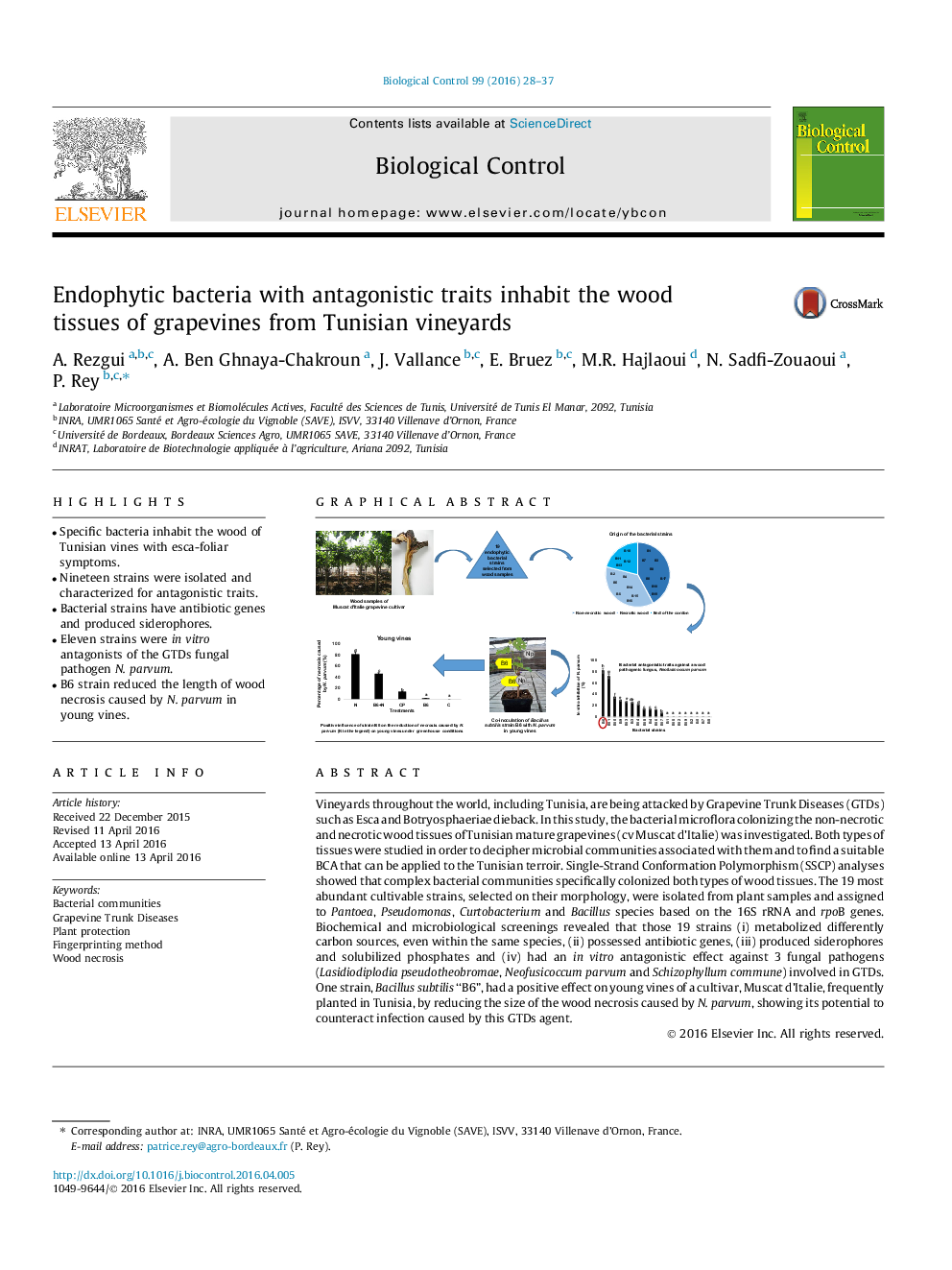| کد مقاله | کد نشریه | سال انتشار | مقاله انگلیسی | نسخه تمام متن |
|---|---|---|---|---|
| 4503636 | 1624235 | 2016 | 10 صفحه PDF | دانلود رایگان |
• Specific bacteria inhabit the wood of Tunisian vines with esca-foliar symptoms.
• Nineteen strains were isolated and characterized for antagonistic traits.
• Bacterial strains have antibiotic genes and produced siderophores.
• Eleven strains were in vitro antagonists of the GTDs fungal pathogen N. parvum.
• B6 strain reduced the length of wood necrosis caused by N. parvum in young vines.
Vineyards throughout the world, including Tunisia, are being attacked by Grapevine Trunk Diseases (GTDs) such as Esca and Botryosphaeriae dieback. In this study, the bacterial microflora colonizing the non-necrotic and necrotic wood tissues of Tunisian mature grapevines (cv Muscat d’Italie) was investigated. Both types of tissues were studied in order to decipher microbial communities associated with them and to find a suitable BCA that can be applied to the Tunisian terroir. Single-Strand Conformation Polymorphism (SSCP) analyses showed that complex bacterial communities specifically colonized both types of wood tissues. The 19 most abundant cultivable strains, selected on their morphology, were isolated from plant samples and assigned to Pantoea, Pseudomonas, Curtobacterium and Bacillus species based on the 16S rRNA and rpoB genes. Biochemical and microbiological screenings revealed that those 19 strains (i) metabolized differently carbon sources, even within the same species, (ii) possessed antibiotic genes, (iii) produced siderophores and solubilized phosphates and (iv) had an in vitro antagonistic effect against 3 fungal pathogens (Lasidiodiplodia pseudotheobromae, Neofusicoccum parvum and Schizophyllum commune) involved in GTDs. One strain, Bacillus subtilis “B6”, had a positive effect on young vines of a cultivar, Muscat d’Italie, frequently planted in Tunisia, by reducing the size of the wood necrosis caused by N. parvum, showing its potential to counteract infection caused by this GTDs agent.
Figure optionsDownload as PowerPoint slide
Journal: Biological Control - Volume 99, August 2016, Pages 28–37
